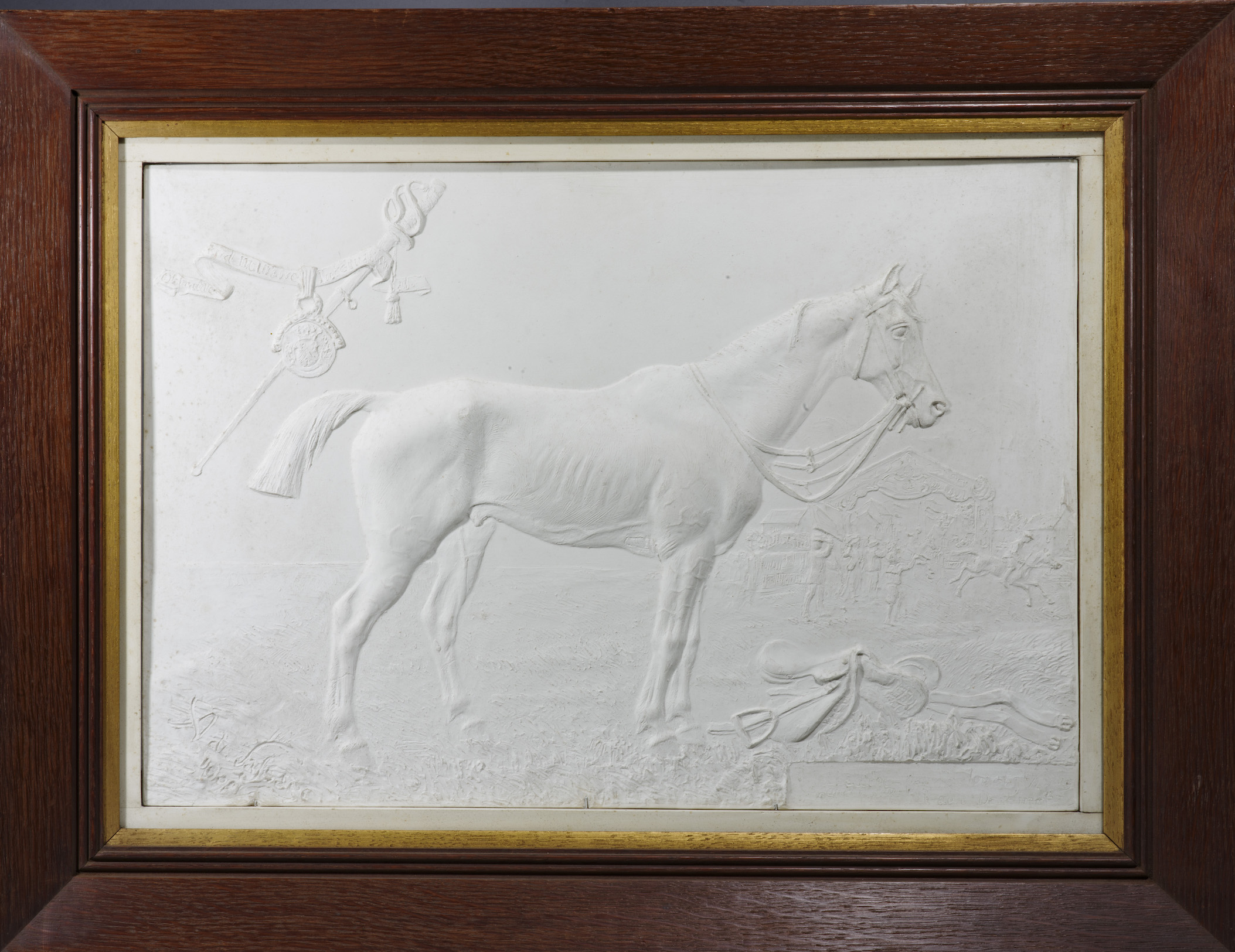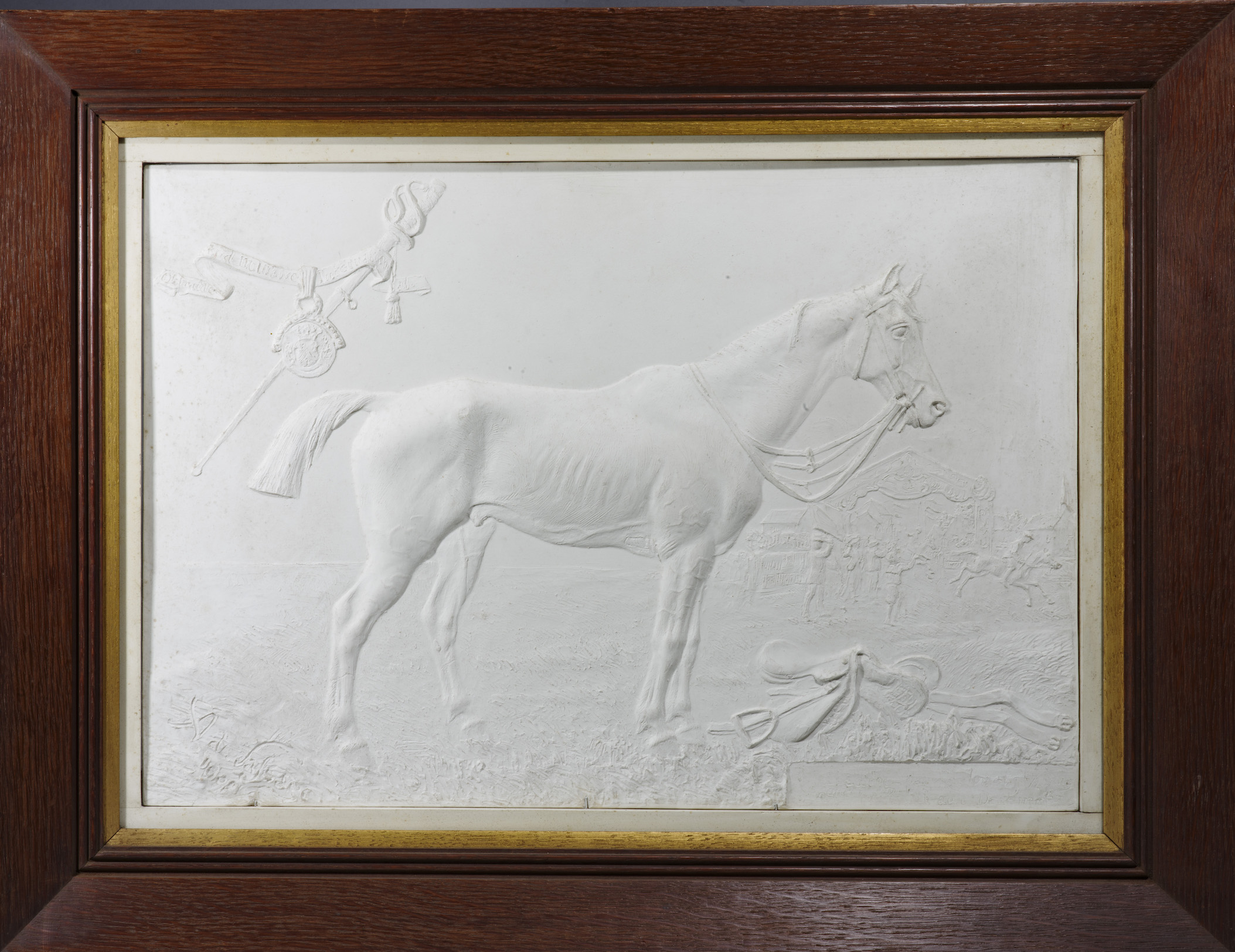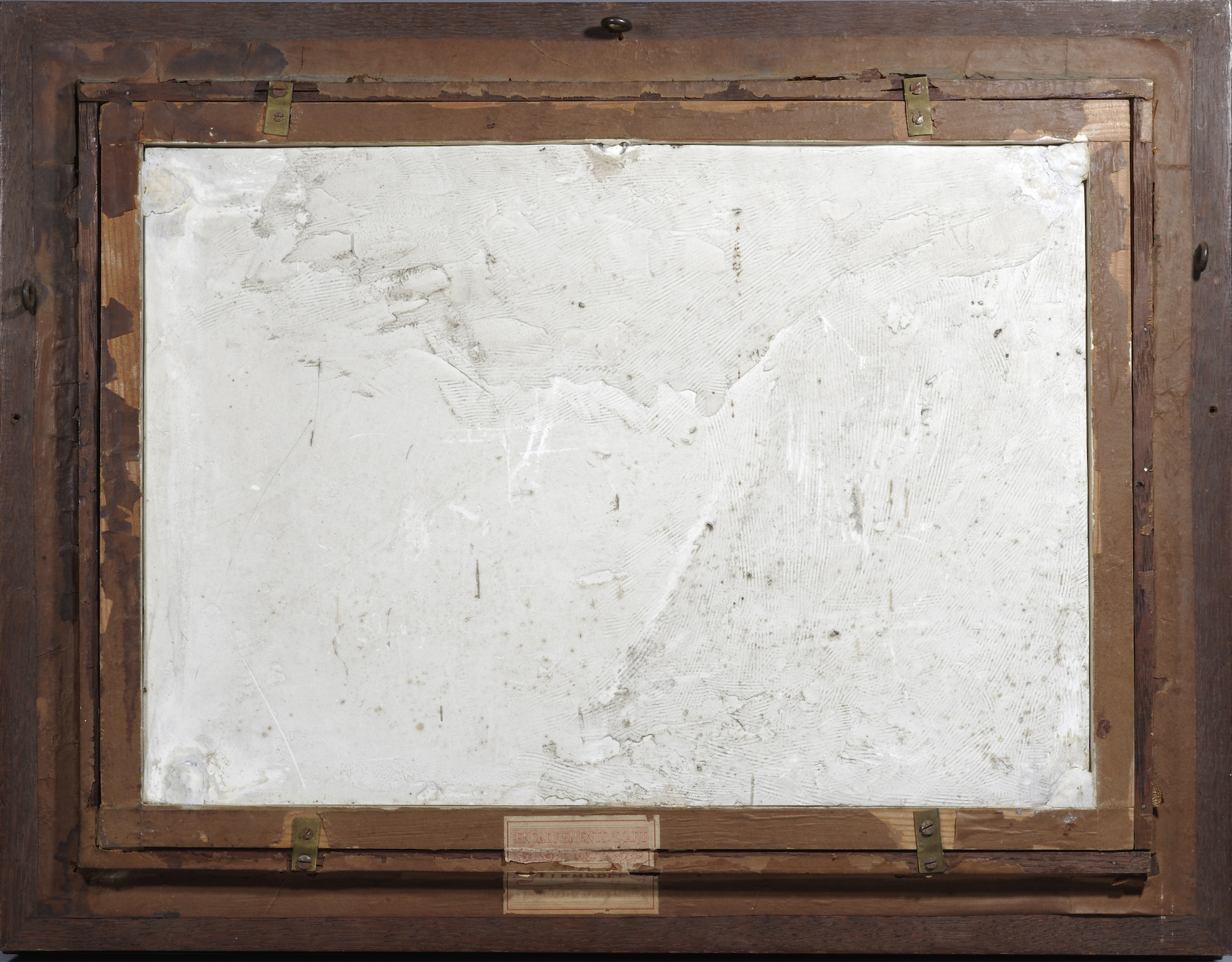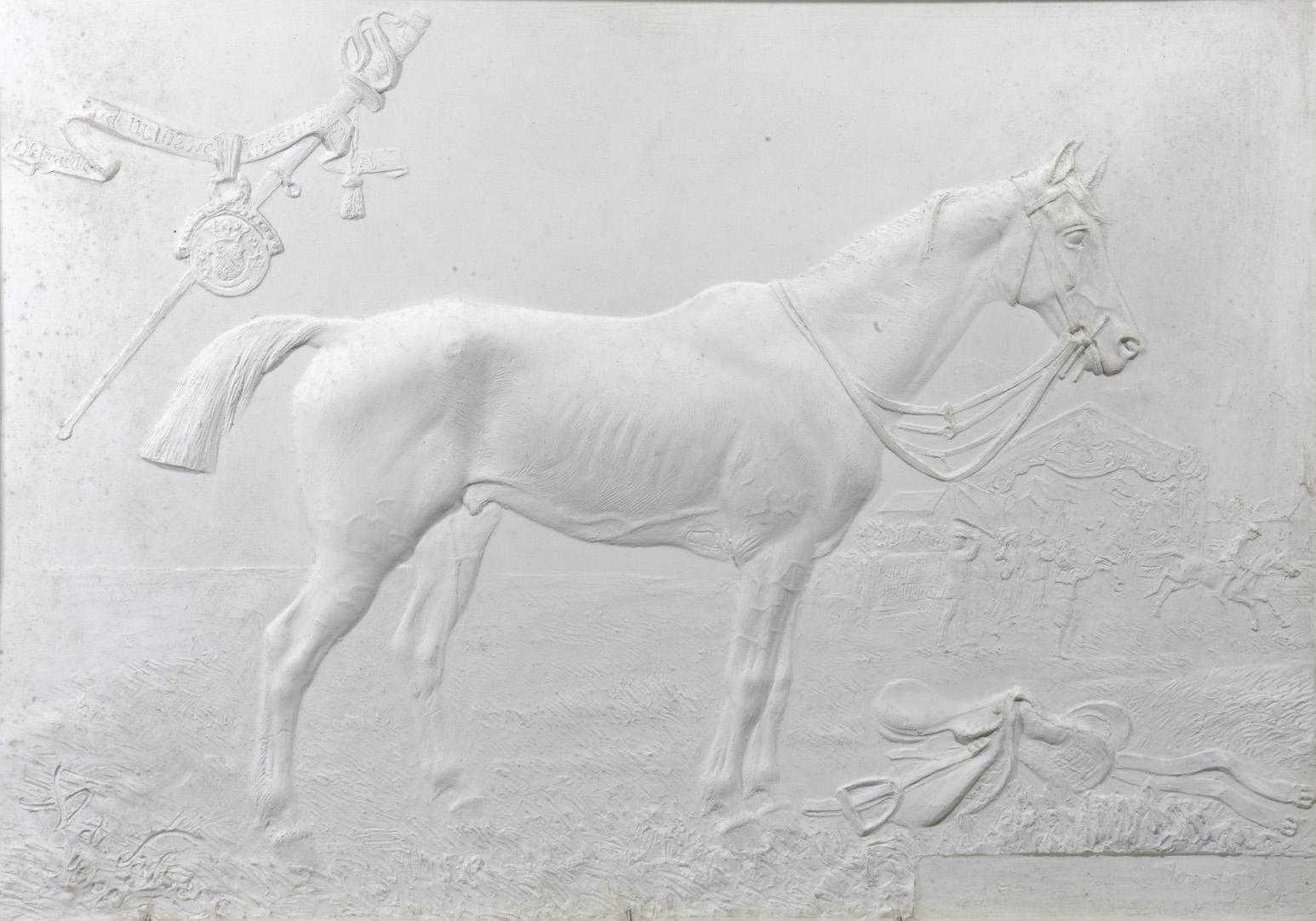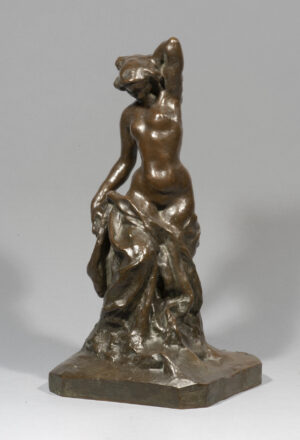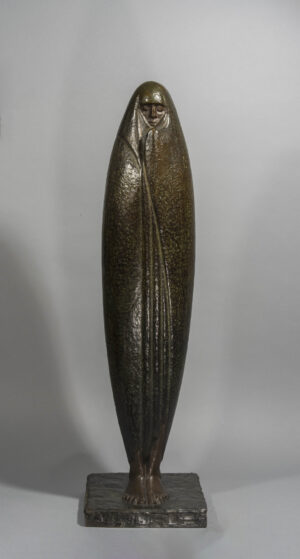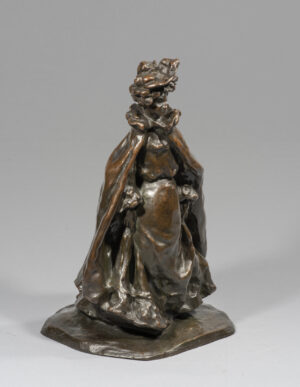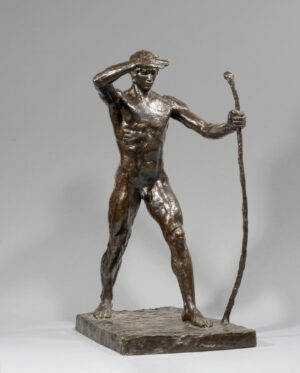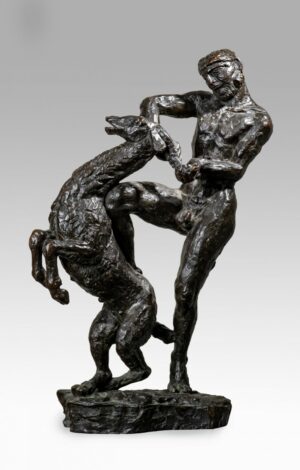Description
As is often the case: every cloud has a silver lining!
After a serious fall from his horse, Count Arthur Gabriel Marie du Passage was forced to abandon a career as a cavalry officer, a career to which he was predestined through his family, and was able to devote himself exclusively to his two passions: sculpture and horses.
Seduced by the dynamism, ardor and anatomy of this animal, which he knew perfectly well, Count du Passage always portrayed it in a realistic, lively and dynamic manner, revealing all his attachment to it, which is reflected in our plaster relief.
This shows a full-length portrait of Vulcan, a chestnut gelding born in 1889, the son of Zulu, an English thoroughbred, and an Anglo-Arab half-bred mare. He had just won 2nd place in the Brussels-Ostend international military raid, which had been held on August 27, 1902. This was an equestrian race for officers only, aiming to cover a distance of 132 km in order to test in how much time and at what speed it could be done. The first three places were won by Frenchmen, the second place by Lieutenant Deremetz of the 8th Hussar Regiment, riding Vulcan, the second horse of Lieutenant de Lastic Saint-Val, who was unable to take part in the race. It is not, however, horse and rider that our artist chose to depict. Only Vulcan appears as the victor, standing in profile, wearing only his harness, while his saddle is on the ground. The background shows on one side is a very finely detailed representation of the race in its different stages, seen in condensed form (galloping horses, frenzied crowds, village houses and churches passed through by the race, streets with their decorations …), while on the other, a sword with a banner identifies the subject “Ostende Raid militaire international” and displays the coat of arms of Ostend.
An impression of life emanates from this remarkably fresh original plaster, worked with great subtelty, sensitivity and precision both in the rendering of the animal and the background.
This is undoubtedly a unique cast, still in its original oak frame.

